By decree of the Supreme Leader, Iran officially appointed Gholam Hossein Mohseni Ejei as head of the judiciary on Thursday, July 1, 2021.
During his nearly 40-year career in the Islamic Republic, Mohseni Ejei has held various positions of responsibility in the Ministry of Intelligence and the judiciary, at the same time having links with figures and groups slightly removed from Iran’s more mainstream hardliners. He’s also known for a few unpredictable and surprising incidents, including throwing a sugar bowl at and biting the shoulder of prominent journalist Isa Saharkhiz and whistling for students during a speech in December 2017.
IranWire spoke to Mohammad Hossein Aghasi, a lawyer and jurist living in Iran, and Iraj Mesdaghi, a human rights activist imprisoned in the 1980s and who now lives in Stockholm, Sweden, about what Iran’s judiciary will be like under Mohseni Ejei.
***
Gholam Hossein Mohseni Ejei was born in 1956 in the city of Ejieh, a village outside Isfahan. On July 1, 2021, as Ebrahim Raisi began making his preparations to relocate to the official presidential residence, the Supreme Leader Ali Khamenei appointed Moslehi Ejei as Chief Justice of the judiciary.
Prior to the appointment, Mohseni Ejei was seen as an all-rounder, a man the regime could trust in any given scenario. His career in the judiciary began in 2014, when he was appointed deputy head under Sadegh Larijani Amoli, and also served as Ebrahim’s Raisi's deputy when he was appointed to the role in 2019.
Larijani had delegated some key powers to Mohseni Ejei, including conducting meetings with deputies and heads of the judiciary and justice department, and the power of deciding whether to execute defendants in drug cases. Khamenei approved these decisions to give Mohseni Ejei significant authority, and Mohseni Ejei became a high-ranking official in the judiciary.
Mohseni Ejei joined the country’s security apparatus in 1983, just as the Islamic Republic’s Ministry of Intelligence was being established. He went on to become the Minister of Intelligence during Mahmoud Ahmadinejad’s first term as president. However, he later resigned as first deputy during Ahmadinejad's second term in protest against the president’s refusal to dismiss his ally Esfandiar Rahim Mashaei as the first vice president.
At that time, the tension between Ayatollah Khamenei and Ahmadinejad had not yet escalated, but the Supreme Leader’s interventions in shaping the cabinet, especially with regard to Rahim Mashaei, had begun. Mohseni Ejei was rewarded for his protest and resignation from Ahmadinejad's government by being returned to the judiciary and given the post of Attorney General; later he became the judiciary’s spokesman and he was then appointed first deputy of the judiciary.
Mohseni Ejei was also the judge in the case of Gholam Hossein Karbaschi, the former mayor of Tehran, a case that made him famous, not least because the trial was broadcast on television. He also gained notoriety in 2017, while speaker of the judiciary, when Mahmoud Ahmadinejad's supporters booed him during one of his speeches. Mohseni Ejei singled out one of his hecklers, a young man who was showing his disrespect for him by whistling at him. Spokesman Mohseni Ejei whistled back and mocked the man for having to use his fingers to whistle. He later boasted about the incident in a speech he delivered to students: "I told the boy who was whistling, 'Isn't it a pity that you whistle with your fingers? This is how you whistle.” In case anyone had any doubts, he whistled again (without using his fingers).
For years, Mohseni Ejei has appeared on the European Union’s and United Nations’ sanctions lists because of his extensive human rights violations. He, like Raisi, has links to the 1988 executions of political prisoners, and was also involved in the serial killings of Iranian intellectuals in the 1990s.
The Supreme Leader’s appointment of a man known for carrying out extensive human rights violations to the most powerful job in the judiciary will further cement what Iranians and much of the world knew already: the Iranian regime will continue to use brutal force to strengthen its hold on the country and its future.
When appointing Mohseni Ejei, Ali Khamenei stated that he expects him to continue what he termed a "transformational approach" and to advance the existing "transformation blueprint" with special care.
The blueprint comment refers to a document Ebrahim Raisi gave Khamenei at the time of his appointment as head of the judiciary, on March 7, 2019. A copy was seen and then published by the Iranian media 20 months later. But will Mohseni Ejei, who had previously been the powerful man behind the scenes of the judiciary before Raisi and who withdrew from it, continue down the path Raisi set out for the judiciary?
Will Mohseni Ejei Continue Raisi’s Legacy?
"People are different and opinions are different," Mohammad Hossein Aghasi, a lawyer living in Iran, told IranWire. "Even their types of obedience is different. I do not think Mr. Ejei will necessarily follow the path of Mr. Raisi.
"There is a perception that, given Mr. Ejei's approach at various times and in different cases, this [appointment] could lead to a difficult period. What reinforces this concern is, in particular, his approach as a judge in cases where he has put the Leader before individuals, as if it is the sovereign who is carrying out the trial."
Gholam Hossein Mohseni Ejei is also known for his suppression of the press during the reformist era. So what does Aghasi think about that? "His views on the press, especially his treatment of Mr. Saharkhiz, shows that what began during Mr. Raisi's term — and led to the release of some of my clients — probably will not continue."
The veteran lawyer refers to an incident that made headlines during a meeting of the Press Supervisory Board in 2005. Mohseni Ejei became angry about a newspaper article about young people. He first insulted Isa Saharkhiz, who was representing press directors, threw a sugar bowl at him and then bit his shoulder.
"Some political cases in which the defendants were imprisoned for years and whose release was not approved were released during Mr. Raisi's time,” Mohammad Hossein Aghasi said. “But these doors are probably closed now. In fact, the windows are shut too."
Among the released political prisoners Aghasi refers to are human rights activists Narges Mohammadi and Arash Sadeghi. But this does not mean that the human rights situation in Iran improved under Raisi. It is true that Mohammadi and Sadeghi were released while Raisi was Chief Justice, but he was also responsible for jailing multiple other political and civil activists during his three-year tenure; many of them faced heavy prison sentences or even execution. In fact, Narges Mohammadi still faces jail time. Although she was released from prison in October 2020 after serving five and a half years in prison, in June 2021, she was sentenced again: 30 months in prison, 80 lashes and a fine.
In his assessment of what the judiciary will be like, Aghasi also draws a comparison between the new chief justice and Mohammad Mohammadi Reyshahri, who served as Minister of Intelligence in the cabinet of Mir Hossein Mousavi between 1984 and 1989 and later became Attorney General.
"I hope we do not go back to the time when Mr. Reyshahri went from the Ministry of Intelligence to the judiciary and created a security- and espionage-heavy atmosphere in the courts to detect crimes,” Aghasi says.
A History of Human Rights Violations and Links to Corruption
According to Iraj Mesdaghi, a Swedish human rights activist and political prisoner in the 1980s, a judiciary headed by Mohseni Ejei will mean an even worse human rights crisis than the current one, pointing to Mohseni Ejei’s role in the suppression and killing opponents of the Islamic Republic in the 1980s and, in particular, the murder of political prisoners in 1988. “[Mohsen] Ejei was an interrogator at branch seven of Evin Prison. The branch was known as 'Evin butchery' in the 1980s. You can imagine what happened in the Evin butchery.
"The first important case that Mohseni Ejei pursued was the case of the explosion in the prime minister's office [in August 1981]. He filed a case against the Mojahedin Organization of the Islamic Revolution and against people like Behzad Nabavi, Mohsen Sazegara, Taghi Mohammadi and Khosro Ghanbari Tehrani. Taghi Mohammadi was killed in prison.
"Taghi Mohammadi was the regime's charge d'affaires in Afghanistan, and photos of him with the American hostage Barry Rosen had been published previously," Mesdaghi said, referring to Mohammadi's role in the security apparatus. "Taghi Mohammadi was summoned from Afghanistan and arrested, and later killed in prison, but it was alleged that he had committed suicide.”
Taghi Mohammadi died in prison in 1986. Pro-government media outlets, such as Fars News Agency, later reported that he had been murdered.
IranWire has revealed that Mohseni Ejei interrogated Taghi Mohammadi, who faced accusations of carrying out the bombing of Prime Minister Mohammad Javad Bahonar's office and killing Mohammad Ali Rajaei.
"Mohseni's record is a black one,” said Mesdaghi, “even in relation to insiders and those who had a hand in the security apparatus, let alone ordinary people and civil activists inside Iran."
Mesdaghi says that corruption under Mohseni Ejei will get worse too. "Mohseni Ejei has served in both the judiciary and the security services for the past 40 years," he told IranWire. "He went back and forth in these departments. We know that he has been involved in major corruption cases.”
One of the cases Mesdaghi mentions is that of the Afrashtehpour brothers, Hassan and Davoud. The two well-known mobile phone importers clashed with their intelligence and security colleagues. During the dispute between the partners, Gholam Hossein Mohseni Ejei sided with the intelligence and security forces and sentenced the Afrashtehpour brothers to 25 and 23 years in prison and a total of 698 lashes.
"Mohseni Ejei also illegally imported mobile phones, and this became clear in the same court,” said Mesdaghi. “But he was acquitted and the Afrashtehpour brothers were imprisoned for a long time. Therefore, Mohseni Ejei is clearly a suspect in all cases, which was made public, sparking disputes between factions of the regime. We can expect the situation of security-related cases to get worse and corruption in the judiciary to escalate.”
According to some media outlets, in 1997, part of the Afrashtehpour Tower on Fereshteh Street in Tehran was transferred to Mohseni Ejei, suggesting a possible bid to lessen the brothers’ prison sentences.
Raisi and Mohseni Ejei also appeared to have targeted Ali Akbar Tabaripour, also known as Akbar Tabari, the director of finance and welfare for Mahmoud Hashemi Shahroudi, and former head of the office of Sadegh Larijani, who ran the judiciary before Raisi. When he became chief justice, Raisi dismissed Tabari immediately and later opened a case against him on charges of corruption. Tabari is currently serving a 59-year prison sentence, of which 31 years are enforceable. Mohseni Ejei also had links to this case.
Rewarded for Taking Action Against Montazeri
According to Mesdaghi, Mohseni Ejei, as prosecutor of the Special Clerical Court, had an influential role in one of Iran’s most important political shifts. "Mohseni Ejei also played a role in putting forth the case and setting the stage for the removal of Ayatollah Montazeri,” he says, referring to Ayatollah Khomeini’s one-time ally who was set to take over from the founder of the Islamic Republic before the two men clashed over the 1988 killing of political prisoners. Montazeri not only fell out of favor; he spent long years after the fall-out living under house arrest.
Moslehi Ejei was responsible for carrying out prosecutions against clerics close to Ayatollah Hossein Ali Montazeri, and, Mesdaghi says, was “the one who interrogated Seyed Mehdi Hashemi in the case against Ayatollah Montazeri. In court, Mehdi Hashemi sat next to Ali Fallahian; the head of that court was Ali Razini, who voted to execute Seyed Mehdi Hashemi."
Mehdi Hashemi, the brother-in-law of Hossein Ali Montazeri, was one of the founders of the Islamic Revolutionary Guard Corps, and was executed in 1987 on charges of ordering the assassination of Abolhassan Shamsabadi, an opponent of Ruhollah Khomeini before the revolution.
Mesdaghi says all those who in some way filed a case against Ayatollah Montazeri, or took a stand against him or betrayed him were promoted within Khamenei's ranks. Mohseni Ejei is one of them, and he obviously continues to benefit.
"Ghorban Dori Najafabadi was the head of Ayatollah Montazeri's office and betrayed him,” Mesdaghi says. “But he was later praised at the Ministry of Intelligence. After he was ousted during the time of serial killings, Khamenei elected him as the country's attorney general and later as his representative in Arak.
“Then there was Seyyed Ahmad Khatami. He was a student of Ayatollah Montazeri and had no role in the system. But because he split from Ayatollah Montazeri and committed all kinds of betrayals against him, he is one of the pillars of the system today: the president of the Guardian Council and the Friday prayer imam of Tehran.
"Mohseni Ejei's situation is the same. He is now being praised for his role in filing a case against Ayatollah Montazeri and his associates.”
Related coverage:
Iran Still Haunted by its “Biggest Crime”: the 1988 Prison Massacre
Decoding Iran's Politics: The Chain Murders of Dissidents
Endemic Corruption Renders Iran’s Judiciary Ineffective and Unjust
visit the accountability section
In this section of Iran Wire, you can contact the officials and launch your campaign for various problems




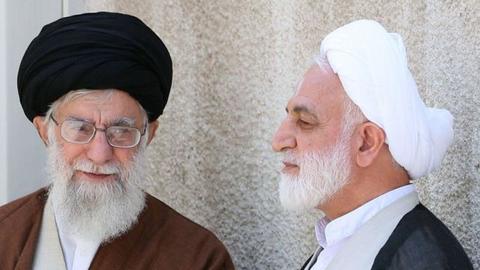
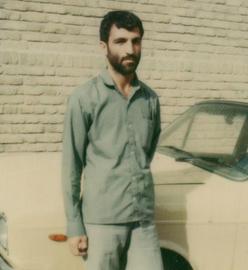
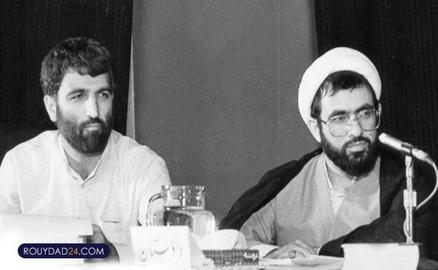
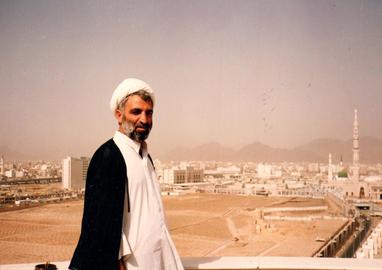
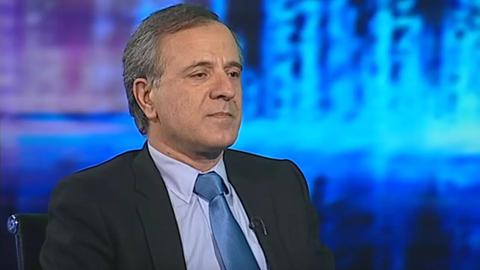
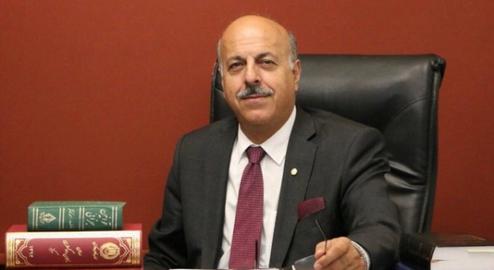
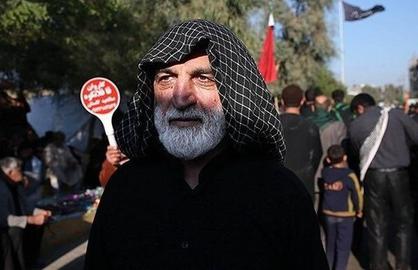



















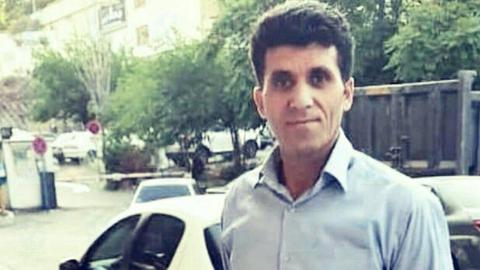
comments